The Motorola Moto G4 and G4 Plus Review
by Brandon Chester on August 15, 2016 8:00 AM EST- Posted in
- Smartphones
- Lenovo
- Motorola
- Moto G
- Moto G4
Camera Architecture
Camera quality on mid-range smartphones has gotten much better during the past few years, but it hasn't advanced to the same degree that other aspects such as the display have, and so it still ends up being one of the weaker aspects of a non-flagship smartphone. In general, we're at the point where still image quality with ample lighting is more than acceptable even on phones that only cost $200, but the relatively small sensors and less advanced ISPs on mid-range phones tend to produce poor images in low light and less than stellar video quality.
In the case of the Moto G4 and G4 Plus, there's a different camera in each model. The Moto G4 is advertised as using a 13MP sensor, while the Moto G4 Plus uses a 16MP sensor with PDAF and laser autofocus as well. This can be useful when shooting in low light, as pretty much every PDAF implementation on a phone with the exception of the Galaxy S7 fails to work in low light, while laser AF continues to work well. One would think that the Moto G4 Plus simply uses a higher resolution sensor in the same line as the sensor used in the Moto G4, but the story is actually more complicated than that. I've arranged data on the cameras for the previous Moto G and this year's Moto G4 and G4 Plus in the chart below to give a more comprehensive picture of their respective camera systems.
| Moto G (2015) | Moto G4 | Moto G4 Plus | |
| Front Camera Resolution | 5MP (2560x1920) |
5MP (2592x1944) |
|
| Front Camera Sensor | Samsung S5K5E2 (1.12 µm, 1/5") |
OmniVision OV5693 (1.4µm, 1/4") |
|
| Front Camera Aperture | f/2.2 | ||
| Rear Camera Resolution | 13.0MP (4160x3120) |
16.0MP (4608x3456) |
|
| Rear Camera Sensor | Sony IMX214 (1.12 µm, 1/3.06") |
OmniVision OV16860 (1.3µm, 1/2.4") |
|
| Rear Camera Focal Length | 3.6mm (27mm eff) | 4.7mm (27mm eff) | |
| Rear Camera Aperture | f/2.0 | ||
| Autofocus | Contrast | Laser + PDAF | |
My original assumption about the Moto G4 was that the G4 Plus simply shipped with a higher resolution sensor of the same size. However, further investigation has shown that this is definitely not the case. The normal Moto G4 ships with the same Sony IMX214 sensor as the 2015 Moto G, although one can hope that the improved ISP built into Snapdragon 617 will help to improve image quality. As for the G4 Plus, it actually uses an OmniVision sensor, and it's a lot larger than IMX214. In addition to being 16MP compared to 13MP on the G4, the increased sensor size means that those pixels are also larger, at 1.3µm compared to 1.12µm. This is a very interesting situation, because in all likelihood it means that the Moto G4 Plus will be much better at low light photography than the less expensive model, and that's not what I expected from a $50 price bump.
Still Image Testing
This first daytime test involves a scene with variant lighting conditions, which can cause some smartphones to overexpose their photos. There's also a lack of direct sunlight throughout the entire area due to the leaves of trees, which provides a good way to see how different phones handle the balance of exposure, noise processing, and sharpening to maintain detail in both bright and dark areas.
Moto G4
Moto G4 Plus
In this first scene both Moto G4 phones do a good job of retaining detail in the image. One can't really say that the G4 Plus has a noticeable advantage when it comes to sharpness. The one area that did stand out to me is the text on the base of the statue sitting to the left of the flag pole, which isn't legible at all on the Moto G4's image, but is in the image taken by the G4 Plus.
More noticeable than the small sharpness differences is the fact that the Moto G4 Plus pulled off a much more natural exposure than the G4. In the Moto G4 image it almost seems like the photo was taken on a cloudy day where the light from the sun was obstructed. In reality there were only a few clouds in the sky and the sun was shining down directly, and this is better reflected in the photo taken by the G4 Plus.
Moto G4
Moto G4 Plus
In my next outdoor scene there's shade provided by the trees, and many phones attempt to trigger their auto HDR, although I disabled it for the purposes of camera testing. The mixture of dark areas and highlights makes it a more difficult scene to get a good exposure than the previous one.
In this scene the Moto G4 and G4 Plus perform similarly. Much like the first scene, the exposure of the two shots is different. Given that both phones share the same ISP, I'm going to attribute this to either different processing being done for the different sensors, or different sensor attributes in general. In any case, both images are similar as far as detail, noise, and sharpness are concerned. The one thing I would note is that the G4 Plus does a better job of maintaining detail in the grassy patch.
One other interesting comparison is between the 2015 Moto G and the Moto G4, as they differ only in their image processors. It's clear when examining the images that the Moto G4 provides superior image quality, and this is especially obvious when looking at details like the tree branches and leaves. In the 2015 Moto G's image it's just a blurry mess of green and brown, while the Moto G4 actually resolves a good level of detail and allows you to see the thin individual branches and different leaves.
Moto G4
Moto G4 Plus
It's pretty clear from the photos above that the Moto G4 Plus is in a completely different class than the normal Moto G4. Looking back to the 2015 Moto G, it's hard to say whether the Moto G4 actually improves in its image quality. Snapdragon 617 provides a better featured ISP, but in the end it's still down to the quality of the sensor and the image processing algorithms to produce a good shot. In this case, the Moto G4 doesn't have the distracting color noise that made the 2015 Moto G basically unusable for low-light photos, but the tradeoff is that the photo is quite blurry and devoid of detail due to heavy noise reduction. In fact, because both phones can only manage similar levels of exposure, I would have to say that the 2015 Moto G actually did a better job here because it maintains a good level of detail and sharpness in the exposed areas despite the color noise.
As for the Moto G4 Plus. the difference can be seen instantly. The phone is able to show much more of the scene by virtue of its larger sensor capturing more light. You can see details on the right side of the frame and in the distance that are obscured on the normal Moto G4 due to its dark exposure. The level of detail and sharpness is also improved, and the photo is actually much better than what you'll get on Google's latest Nexus devices with the HDR+ mode disabled.
Moto G4
Moto G4 Plus
The Moto G4 suffers from the same blurry output in this next test as it did in the previous one. However, in this circumstance the brighter exposure of the images means that the color noise on the 2015 Moto G is much more distracting, and so I would probably opt for the Moto G4's image this time around. As for the Moto G4 Plus, there is an improvement over the normal Moto G4 but not to the same degree as the previous image as both phones manage a similar exposure in the scene. What is clear is that the Moto G4 Plus isn't using the same heavy noise reduction that smears away detail, leading to a slightly noisier but also much more detailed result.
Overall, I think the Moto G4 provides acceptable image quality for a $200 smartphone. IMX214 is definitely showing its age, although it's funny how Google's less-than-optimal image processing leaves the Nexus 6 with worse image quality despite having a much more powerful SoC and OIS paired with the same sensor. The Moto G4 does outperform the Huawei Honor 5X, which has been my general recommendation at this price point. As for the Moto G4 Plus, it has surprised me in how well it performs for a $250 smartphone. The low-light image quality is much better than any other $200-300 device that I've personally used, and I think it's definitely worth the $50 if you're a user who likes to take a lot of photos but is on a tighter budget for a smartphone.
Video Recording
Both the Moto G4 and G4 Plus can record 1080p video at 30fps. I've opted to do my test with the Moto G4 Plus, but in general there's not really any difference between the two. If you decided to do video recording at night the circumstances may change due the G4 Plus's larger sensor, but I don't think either phone is going to produce any sort of usable video at night.
The Moto G4's video quality is acceptable for a mid-range device, but there's nothing exceptional about it. Video is encoded using the H.264 High profile, with an average video bitrate of 17Mbps. It's good to see devices leaving behind the H.264 Baseline profile, which was used by several devices last year and is missing many features that can improve video quality at a given bitrate. The audio is a 96kb/s stereo track. In general, the video isn't too detailed, but Motorola does a good job of managing the exposure and maintaining a smooth frame rate, both of which have been issues on inexpensive smartphones in the past.


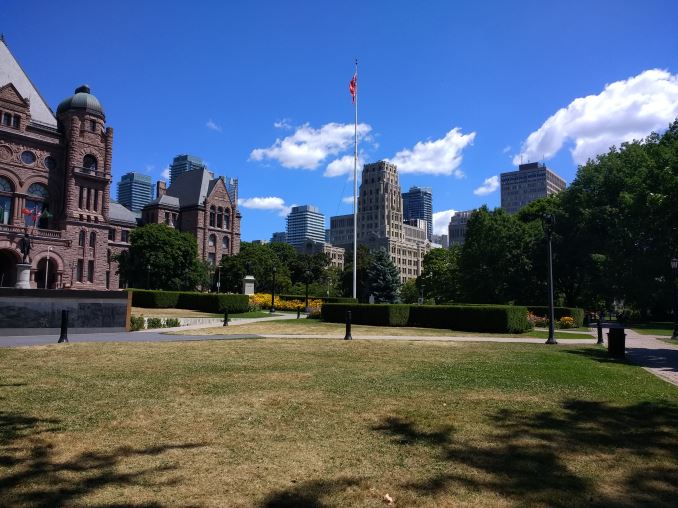
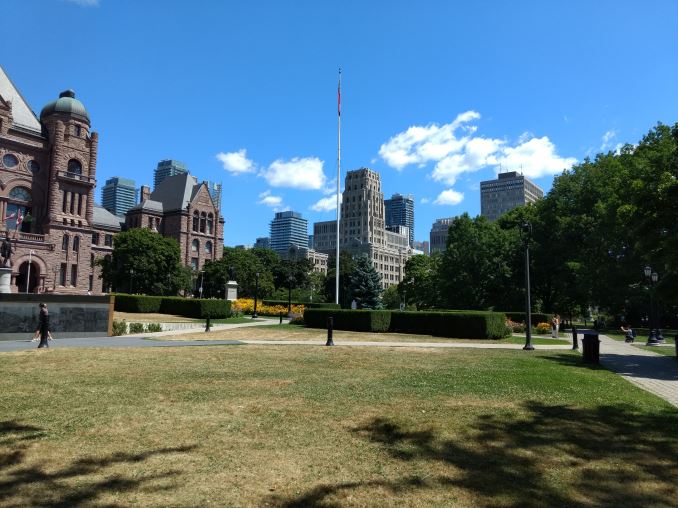















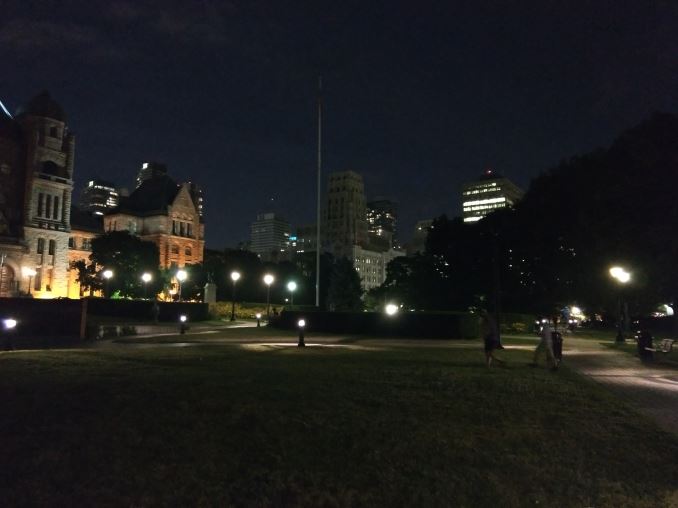






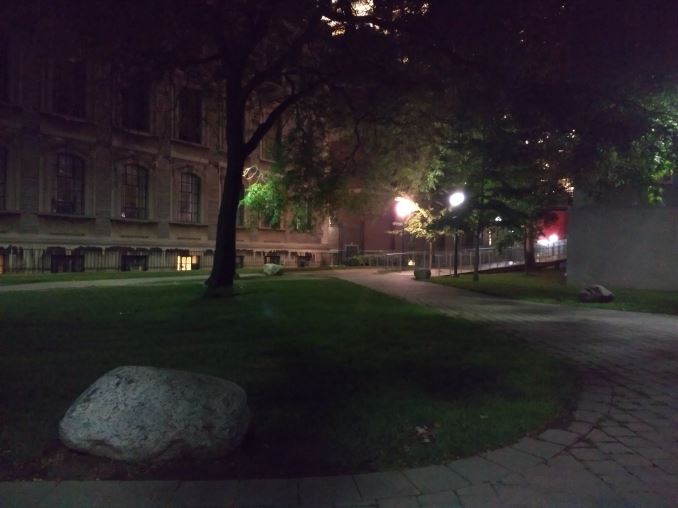
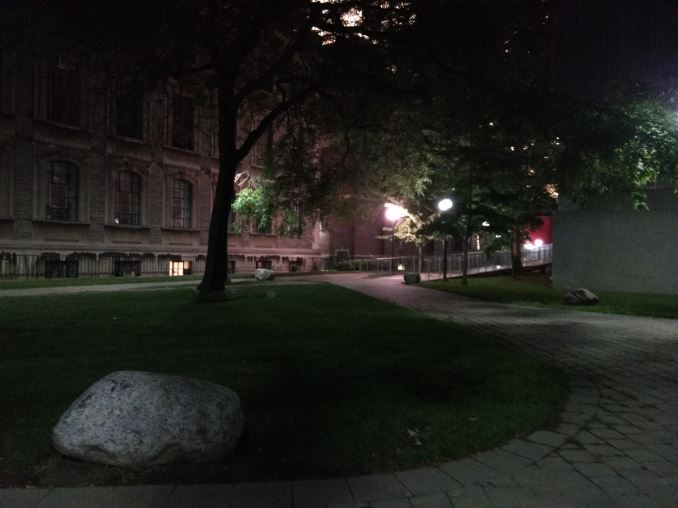














94 Comments
View All Comments
Belard - Tuesday, August 23, 2016 - link
I am disappointed with the G4, hopefully they'll correct a lot with the G5?My list:
1 - The loss of the Moto shape. The G4 looks generic, flat and "ugly" in my book. Compare to the other NON-USA Lenovo phones, I would have thought they could have done better. The curved back on the G3 and older MOTO phones gave it personality and felt good in the hand. You can tell which side is the TOP without feeling the camera hump/stripe.
2 – Its easier to pick up a phone with a curved back. Simulate it by placing your phone face-down and only picking it up by the edge.
3 – My Moto G3 is functional water proofing. Enough that I take underwater video with my phone. Was it really that hard to continue with such quality?
4 – The finger reader is completely ugly and ruins the whole phone. Should have put it on the back for the Moto Logo. That would have worked very well.
5 – 5.5”?! Can someone make a well made 5” model? The G4Play is no better than the G3… but loss its water proofing and has the plain ugly flat back.
6 – Stereo speakers. The G2 had them. The G3 has a large grill, but its not a speaker. On the G4, the mic-hole looks out of place where it is.
Come on Lenovo, fix the design for the G5 model. I’ve seen some of the Lenovo phones in Asia that are works of art. Such as the 3-layers metal phone, etc. Hell, even the new Z has some design flaws that should have been fixed.
jamesfuston - Tuesday, August 30, 2016 - link
One of the largest considerations for me in purchasing this phone was completely omitted from the summary of this article: support for every major US carrier. I get that this is a technical analysis and comparison of smartphones as computational devices, but the fact that you can use a G4/G4P on Verizon or Sprint (where a Huawei 5X will not function) is a MAJOR plus in the $200 smartphone category. Broad carrier support + fast charging, two features that provide day to day value and utility on a smartphone, make the G4 an easy pick for the best budget smartphone in my opinion.Allan_Hundeboll - Wednesday, September 7, 2016 - link
I don't own this phone but I think Brandon Chester judge this phone a little hard...Personally I used to prefer smaller phones to but once you go large you don't wont to go back. So if Brandon believe 5.5" inch is to big it's his personal preference.
I also do not agree the G4 Plus should have prioritized a faster SOC over fingerprint reader and camera. I know anandtech readers low fast hardware but for the average customer modern phones are fast enough, so better camera and the convenience offered by a fingerprint reader matters more than a slightly faster SOC.
Itbusiness.ca managed to complete PCMarks battery test with the G4 Plus and it scored a respectable 9 hours and 40 minutes.
mmartel - Tuesday, October 11, 2016 - link
I'm a long time user of a 2015 G3 who decided to buy and test out a US XT1625 G4 with 2/16 ram/storage for myself. I've also owned and gave away a Nexus 5X (loved the camera, hated the battery life). I've been using the G4 for the last 2 weeks and wanted to share a few thoughts.1. I don't doubt the official review but I think the model that was tested differs from the current firmware. I've found the 6.0.1 Android version on my device to very stable, responsive, and efficient.
2. The buttons on my device are very solid. Additionally I find the placement perfect for my hands and how I generally hold the device. YMMV obviously.
3. I don't love the size, but I am falling for the screen size. I worry about dropping the device and it's not as comfortable for me to use one handed. However that has everything to do with the size and nothing to do with the materials and shape.
5. The SoC performance really is good enough for all but the most demanding users and/or use cases. Subjectively it feels just slightly snappier than my Moto G3.
6. Real world battery life seems notably better than my G3. It seems like the device sleeps better which preserves charge when not actively using the device better.
I wasn't sure if I would keep the G4 but I'm starting to fall for the screen, longer battery life, and snappier performance compared to the G3.